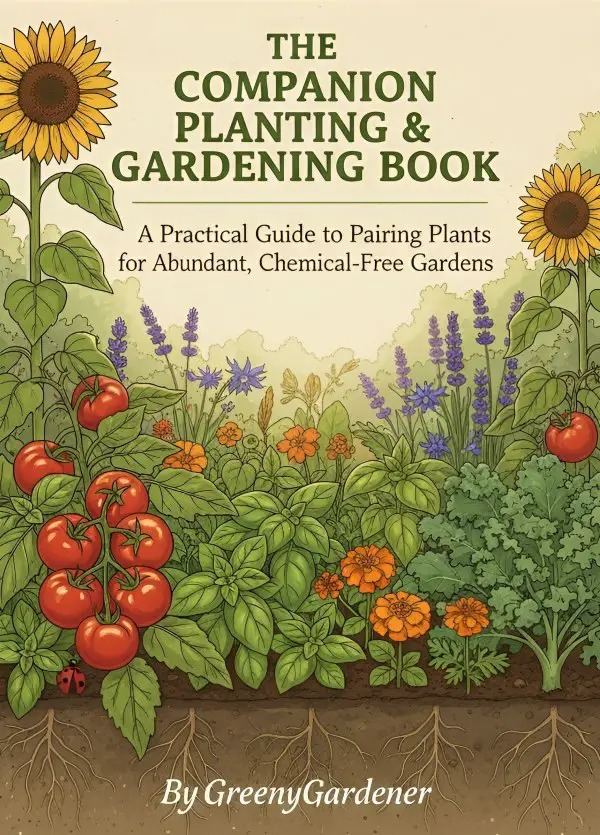Hibiscus Wilting After Transplant: How to Revive Your Plant
Transplanting a hibiscus can sometimes cause the plant to wilt, which can be alarming for gardeners. The shock of moving from one location to another can stress the plant, resulting in wilting and a general decline in its health.
However, understanding the causes and taking immediate action can help revive your hibiscus and restore it to full health. This guide explores the reasons behind hibiscus wilting after transplant and offers practical solutions to manage the issue effectively.
What's On the Page
Why Does Hibiscus Wilt After Transplanting?
Transplant shock is the primary cause of hibiscus wilting after being moved. During the transplant process, the plant’s root system is disturbed, and it may struggle to absorb water and nutrients properly in its new location.
This disruption can lead to symptoms like wilting, drooping leaves, and stunted growth. Additionally, factors such as improper watering, root damage, and insufficient acclimation to its new environment can further exacerbate the wilting.
Common Causes of Wilting After Transplant
1. Root Shock
The most common cause of wilting in hibiscus after transplanting is root shock. When you transplant a hibiscus, its roots are often damaged or exposed, making it difficult for the plant to absorb water. Without an adequate water supply, the leaves begin to wilt, and the plant appears to be under stress.

🌿 The Companion Planting & Gardening Book (eBook)
Bigger harvests, fewer pests — natural pairings & simple layouts. $2.40
Get – $2.40
🪴 The Pest-Free Indoor Garden (eBook)
DIY sprays & soil tips for bug-free houseplants. $1.99
Get – $1.992. Improper Watering
Overwatering or underwatering can both cause the hibiscus to wilt after a transplant. Hibiscus plants prefer moist, well-drained soil. If the plant is not watered enough, it may not be able to establish its roots in the new location, leading to wilting. On the other hand, overwatering can cause the roots to become waterlogged, preventing them from taking up oxygen, which also leads to wilting.
3. Environmental Stress
Moving the hibiscus to a new environment can cause stress, especially if the new location has drastically different light, temperature, or humidity levels. For example, a hibiscus that was thriving in a warm, sunny spot may wilt if moved to a cooler or shadier area. Sudden changes in climate can shock the plant, leading to wilting.
4. Root Damage
If the roots are damaged during the transplant process, the plant’s ability to absorb nutrients and water will be compromised. Cutting through roots or handling them too roughly can cause irreversible harm to the plant, leading to signs of distress like wilting.
5. Lack of Acclimation
Hibiscus plants, especially tropical varieties, are sensitive to changes in their environment. When transplanted, it is essential to allow the plant to acclimate to its new surroundings gradually. If the plant is not given enough time to adjust to factors like sunlight exposure, wind, or soil composition, it may start to wilt.
How to Prevent Hibiscus Wilting After Transplant
1. Handle Roots with Care
When transplanting, it’s essential to be gentle with the roots. Try to preserve as much of the root ball as possible and avoid breaking or tearing the roots. If the roots are exposed, keep them moist until they are safely planted in the new soil. For a hibiscus, this can reduce the chances of transplant shock.
2. Water Properly
Watering is crucial during and after transplanting. Ensure that the plant receives enough water to help the roots settle into their new environment. The soil should be moist but not waterlogged. After transplanting, water deeply but avoid frequent shallow watering. This encourages the roots to grow deeper, helping the plant become more established.
- Tip: Mulching around the base of the plant can help retain moisture and keep the roots cool.
3. Acclimate the Plant to the New Environment
Before transplanting, try to acclimate your hibiscus to the new location. Gradually increase its exposure to sunlight or shade, depending on the new environment. This process of hardening off will reduce the shock the plant experiences after being moved, decreasing the likelihood of wilting.
4. Improve Soil Quality
Ensure that the new soil is well-draining and rich in nutrients. Adding organic matter such as compost or well-rotted manure can improve soil structure and provide essential nutrients. This will make it easier for the plant to establish itself and recover from any shock.
5. Provide Temporary Shade
If the new location receives a lot of direct sunlight, consider providing temporary shade for the first few days after transplanting. This will help protect the plant from excessive heat while it adapts to the new environment.
Steps to Revive a Hibiscus Wilting After Transplant
Step 1: Assess the Root Condition
If your hibiscus is wilting after being transplanted, the first step is to check the roots. Gently dig around the base of the plant and examine the root system.
Look for signs of root rot, which can occur if the plant has been overwatered. Healthy roots should be white and firm, while rotting roots will be soft and discolored. If you notice root rot, trim away the affected areas and replant the hibiscus in well-draining soil.
Step 2: Adjust Watering Habits
If the hibiscus is wilting, it may be because it’s either getting too much or too little water. Adjust your watering schedule to ensure that the soil remains consistently moist but not soggy. If the plant is in a container, make sure there are adequate drainage holes to prevent water from pooling at the bottom.
Step 3: Prune the Plant
Pruning can help reduce the stress on a wilting hibiscus by allowing the plant to focus its energy on recovering. Trim back any dead or damaged branches and leaves. This will not only improve the plant’s overall appearance but also promote healthy new growth.
Step 4: Apply Fertilizer
Once the plant has started to recover, applying a balanced fertilizer can give it a boost. Choose a fertilizer that is rich in nitrogen, phosphorus, and potassium, as these nutrients will encourage healthy root growth and help the plant bounce back faster.
Step 5: Monitor the Environment
Keep a close eye on environmental conditions such as sunlight, temperature, and humidity. If the hibiscus is exposed to extreme conditions, consider moving it to a more suitable location or providing additional protection, such as shade cloth or a windbreak.
Signs That Your Hibiscus Is Recovering
After making adjustments to care for your hibiscus, you should begin to see signs of improvement within a few weeks. Look for the following indications that the plant is recovering from transplant shock:
- New leaf growth: Healthy new leaves indicate that the plant is overcoming transplant shock.
- Firm stems: If the stems are no longer drooping or soft, it’s a sign that the plant is stabilizing.
- Improved color: Leaves regaining their bright green color show that the plant is recovering its health.
Conclusion
Hibiscus wilting after transplant is a common issue, but with the right care and attention, it can be resolved quickly. By understanding the causes of wilting—such as root shock, improper watering, and environmental stress—and taking proactive measures like careful root handling, proper watering, and gradual acclimation, you can help your hibiscus recover from transplant shock and thrive in its new location.
- Common Types Of Bushes – Your Essential Guide To Garden Design & Care - December 17, 2025
- Bushy Flowering Plants – Your Ultimate Guide To Lush, Vibrant Blooms - December 17, 2025
- Bushes For Planting – Your Ultimate Guide To A Thriving, Beautiful - December 17, 2025
